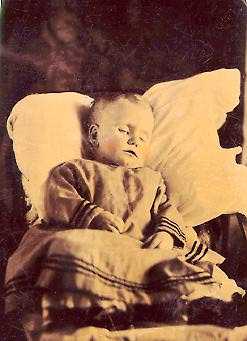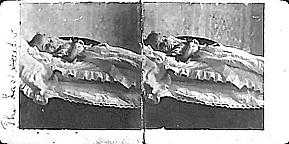Ultimately, what I am seeking in the photograph taken of me . . .is Death: Death is the eidos of that Photograph.
This equation between photography and death can move from the sphere of suggestion to the domain of the actual, from the metaphoric to the literal. Even as the photograph of the living speaks of future death, the dead live on through their photographic representations.

Camera Lucida was prompted by the death of Barthes' mother. Barthes is in search of an image of her that will keep alive her memory --"an image which would be both justice and accuracy -- justesse: just and image, but a just image." Although his text includes numerous photographs, Barthes will not show us the photograph he settles upon -- an image, incidentally, of his mother at a time when he could never have known her, when she was still a child -- for us this image would mean nothing, be nothing but an image. He writes, "It exists only for me. For you, it would be . . . . ordinary . . . for you, no wound."
On other occasions, these images of the dead are made doubly literal -- not just an image of a now-dead person, but an image of the dead person actually dead, as in the nineteenth-century photograph shown here of a dead child. If the photograph of a live person foretells death, does the photograph of death itself preserve life?

Death
was, on occasion, pictured three-dimensionally as well. This stereoscopic image of a dead child probably dates
from the early twentith century.

Perhaps the converse of a photo of a dead daughter on a mantelpiece, would be a pre-death photograph affixed permanently to a mother's tombstone:
Maintained by
jmnookin@bug.village.virginia.edu
URL: http://www2.iath.virginia.edu/ensp982/mnookin/dead.html
Last Modified: Tuesday, 26-Feb-2008 14:47:52 EST